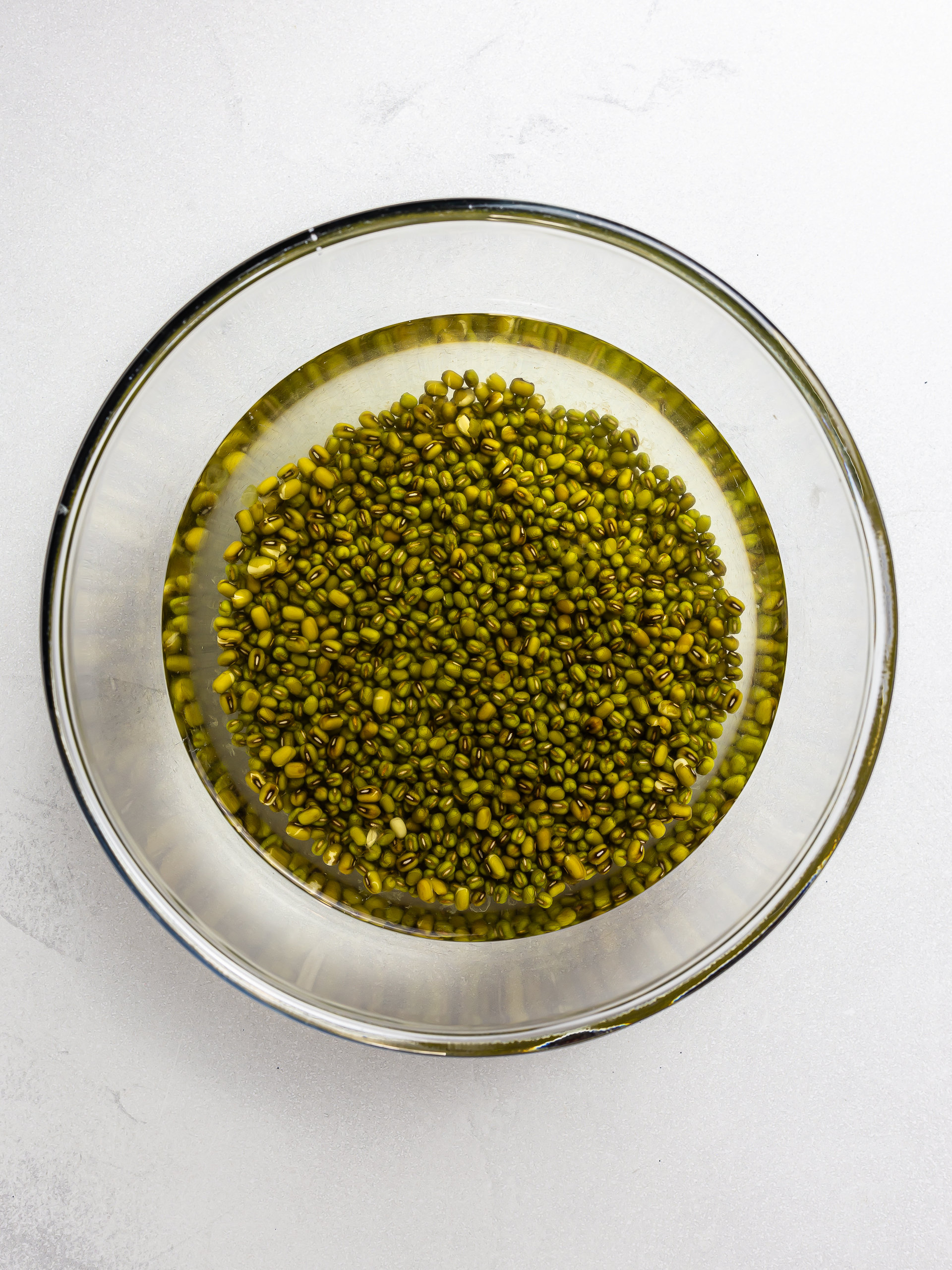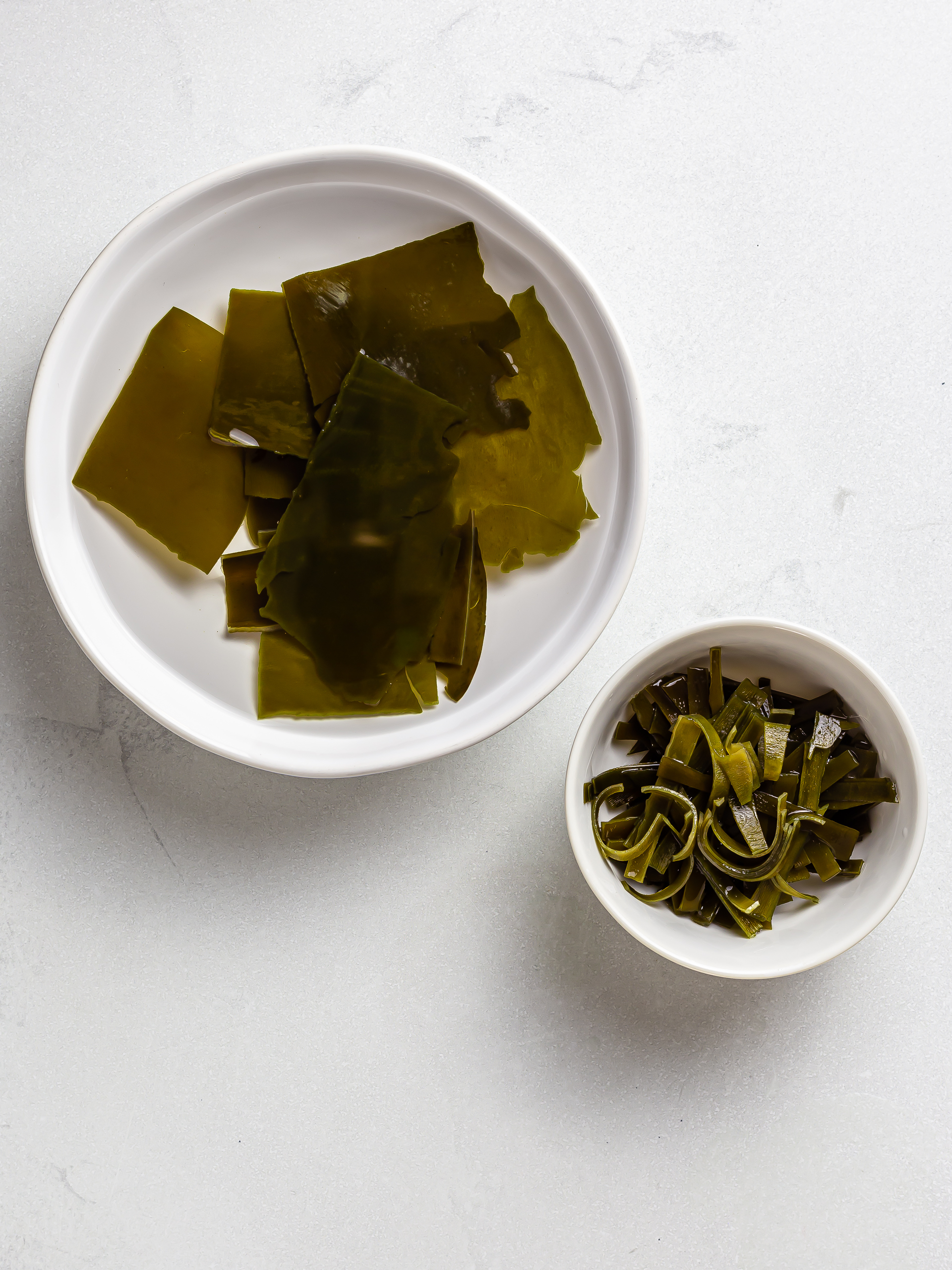Today, we'll show you how to make a traditional Chinese green bean soup, a sweet dessert soup prepared with nutritious mung beans. You'll need just 4 ingredients, easy to find at your local Asian food store. If you never tried sweet soups before, you're in for a treat!
But wait, did we say soup for dessert? That's right! In China, they have a huge variety of delicious sweet soups, called tong sui, which literally translates into "sugar water". Served hot in winter or cold in summer, these soups are usually enjoyed as a dessert in Cantonese cuisine, but also at breakfast, teatime or with dim sum.
Tong sui soups can be prepared with a variety of ingredients, like red adzuki beans, black sesame seeds, rice, eggs, or almonds. But for today's recipe, we chose the glorious mung beans, also known as green beans in China. Mung beans are small, olive-green legumes widely used in Asian cuisine in both sweet and savoury dishes.
Besides mung beans, you'll also need kelp, tangerine peel, and a sweetener of choice. Kelp is a type of dried seaweed, the one you use to prepare the dashi broth for miso soup. In the steps below, we'll show you how to prepare kelp and use it in the soup to add a wonderful umami flavour.
As for the tangerine, you can opt for the traditional dried tangerine peel or use the fresh one as we did. Chinese dessert soups typically use rock sugar as a sweetener. It consists of large sugar crystals made from a solution of sugar and water. Because it's a bit tricky to find, we made our recipe with brown sugar, which is more accessible instead. But you can also use white sugar, honey, maple or golden syrup if you like.
What makes this Chinese mung bean soup so unique is the combination of sweet, citrusy, and savoury notes. And you'll even get a nice boost of proteins from the beans, all in just 220 calories per bowl. Awesome!
Ingredients
| Raw Mung Beans | 200 g |
| Dried Kelp | 10 g |
| Tangerine (peel only) | 1/2 |
| Water | 2 L |
| Brown Sugar | 40 g |
Step 1
Rinse the mung beans, add them to a bowl and cover them with water.
Let them soak at room temperature for 2-4 hours or overnight.

Step 2
In another bowl, soak the kelp seaweed for 10-15 minutes until it's soft and rehydrated.
Then, rinse it and cut it into thin strips with a knife or scissors.

Step 3
Drain the mung beans and add them to a large pot, followed by the prepared kelp and tangerine peel.
Pour in the given water, bring to a boil, and simmer over low heat for 35 minutes, stirring occasionally.
If any foam appears on the surface, skim it off with a spoon or sieve.
The mung beans are ready when they're soft and start to break down.

Step 4
Finally, tip in the sugar and stir well until it's dissolved.
At this point, taste the soup and add salt or more sugar according to taste.
Enjoy your Chinese mung bean soup hot or cold.

Tips
If you prefer a thicker soup, cook it for 10-15 more minutes or blend some of the mung beans.
The classic Chinese soup uses rock sugar, large crystals made from a solution of water and sugar. Because it's already diluted, rock sugar is less sweet than pure sugar. In our recipe, we swapped it with brown sugar, which is easier to find. Also, we reduced the amount to give the soup the same sweetness it would have with rock sugar.
You can swap fresh tangerine peel with the dried one, which is usually used in the classic Chinese green bean soup.
